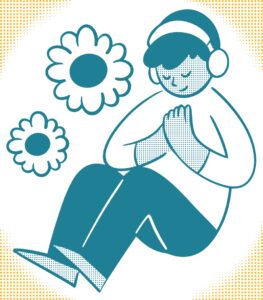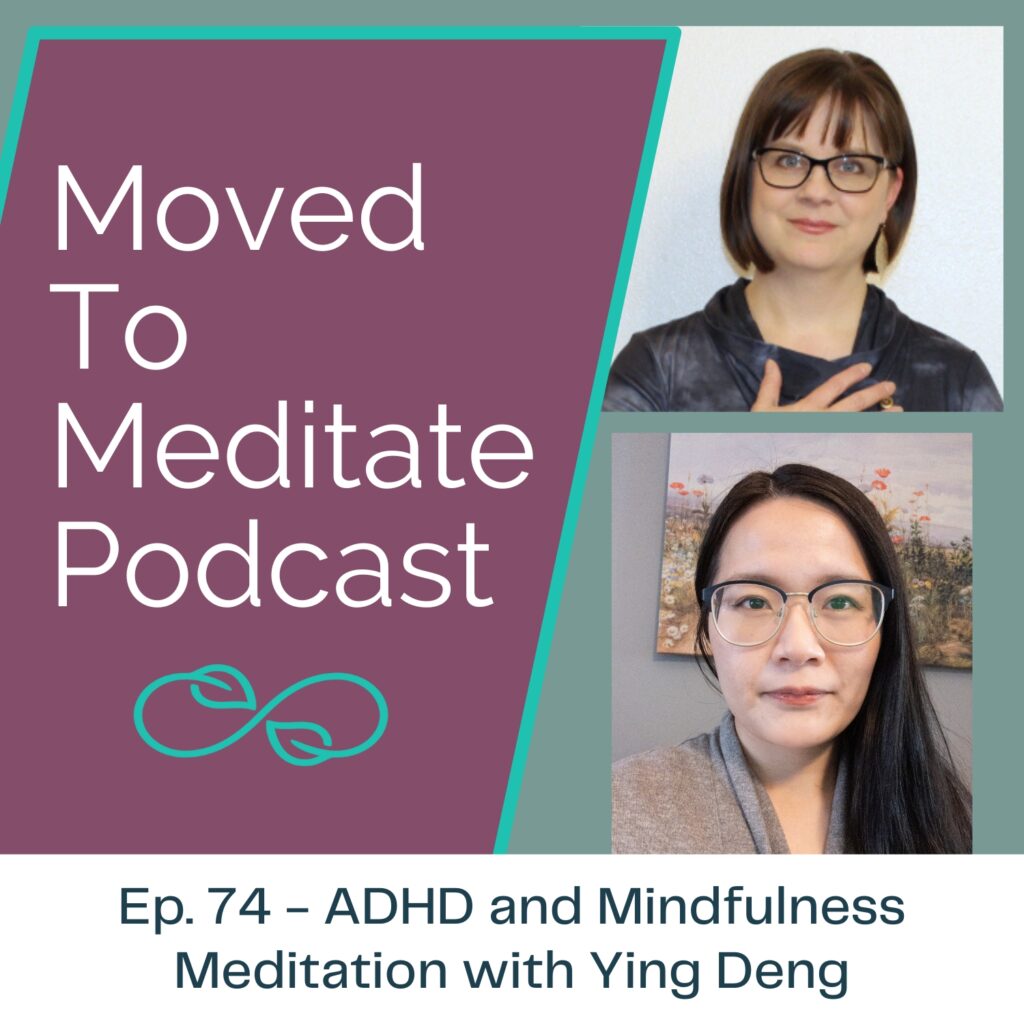Neurodiversity-Affirming Mindfulness Practices with Sue Hutton and Jan Wozniak
In this episode of the podcast, you’ll hear from two experts on neurodiversity-affirming mindfulness practices, Sue Hutton and Jan Wozniak. We’ll be talking about how Mindfulness Meditation programs can be offered in a more inclusive way for autistic adults, those with ADHD and other forms of neurodivergence.
Episode Details:
My guests, Sue Hutton and Jan Wozniak, work together at the Azrieli Adult Neurodevelopmental Centre at CAMH (Centre for Addiction and Mental Health) in Toronto. The Azrieli Centre is a first-of-its kind organization in Canada that does research with the neurodevelopmental disability community.
Sue and Jan each share about their backgrounds in meditation, and what led them to viewing mindfulness practices through this lens of neurodiversity. In particular, Jan speaks about how he turned to mindfulness to help manage the anxiety and sensory overwhelm arising from having to navigate neurotypical settings.
The conversation also touches on several ways that the traditional presentation of mindfulness can be problematic for neurodivergent individuals, or simply fail to resonate with what they might like to address through meditation.
Neurodiversity-Affirming Mindfulness Topics We Discuss:
- addressing social anxiety and sensory issues that can come up in a group class setting
- the importance of offering multiple ways to practice a technique like Mindfulness of Breathing or Loving-Kindness Meditation
- stacking anchors to help students connect with the kinesthetic, visual, or auditory aspects of meditation, on their own terms
- being aware of how different verbal instructions may (or may not) work for everyone
- how Sue and Jan approach Mindful Movement and Walking Meditation for neurodivergent groups.
If you are a meditation teacher, I hope this episode will heighten your awareness, so that you can adapt practices to be more neurodiversity-affirming and create spaces that are more user-friendly for diverse minds.
And, for those listening who identify as neurodivergent, I hope you’ll come away with new resources that lead you to useful (and enjoyable) meditation practices, tailored to your unique needs.
Guest Bios:
 Sue Hutton has been a long-term practitioner and teacher of Mindfulness Meditation. She trained professionally with Jon Kabat-Zinn, founder of Mindfulness-Based Stress Reduction.
Sue Hutton has been a long-term practitioner and teacher of Mindfulness Meditation. She trained professionally with Jon Kabat-Zinn, founder of Mindfulness-Based Stress Reduction.
She focuses her work these days on supporting mindfulness in neurodivergent communities, working with a research team at the Centre for Addiction and Mental Health. Her perspective as a social worker and her experience in disability advocacy informs the way she shares traditional mindfulness techniques.
 Jan Wozniak is a licensed philosophical counsellor whose interests in Eastern philosophy, Buddhism, and neurodevelopmental research led to his pursuit of psychology and mindfulness-based practices.
Jan Wozniak is a licensed philosophical counsellor whose interests in Eastern philosophy, Buddhism, and neurodevelopmental research led to his pursuit of psychology and mindfulness-based practices.
As an autistic adult, Jan combines theory, practice, and lived experience to support fellow neurodivergent community members through participatory research, informed programming, and advocacy initiatives. Jan serves as a Program Engagement Co-Facilitator at the Centre for Addiction and Mental Health, and is planning to pursue graduate studies in clinical psychology in 2024.
————————————
A few terms we used in this conversation…
Neurodiversity – a framework for embracing the natural variation in human minds, recognizing that no two brains (or minds) perceive and process information in the same way. The term Neurodiversity is a reframing of the traditional concept of disability, as it is meant to affirm the wide range of skills, gifts, and needs that individuals have. The term was coined in the mid-1990’s by sociologist Judy Singer.
Neurodivergent – describes people with certain types of variation in their brain function or development. This umbrella often includes autism, ADHD, dsylexia, dyspraxia, dyscalculia, social anxiety, OCD, bipolar, synesthesia, and more.
Neurotypical – describes people whose cognitive traits have been normalized by society
Alexithymia – difficulty being aware of or describing emotions and inner states
Dyspraxia – neurological difference in how you plan and coordinate motor functions, resulting in greater difficulty with movement-related tasks, and greater energy expenditure to complete motor tasks
Aphantasia – image-free thinking, inability to visualize. According to aphantasia.com, this trait can go beyond the visual and may include being unable to imagine sound, taste, smell, movement, or touch.
Resources and Links from this episode:
- Sue Hutton’s website with offerings related to all things neurodiversity and mindfulness (including free streaming meditations, groups and resources)
- Neurodiversity-Informed Mindfulness Course (taught by Sue) through Mindful Society Global Institute
- Sue’s articles on mindful.org: Learning to Celebrate Neurodiversity in Mindfulness and 3 Mindfulness Practices for Neurodiverse Meditators
- Jan Wozniak’s paper Mindfulness-Based Cognitive Therapy (MBCT) and ADHD Undergraduate Students: A Commentary on Randomized Controlled Trial Results
- Sue also recommended the book Neurotribes by Steve Silberman, as well as the work of Temple Grandin
More podcast episodes you might like…
If you enjoyed this conversation, check out Episode 74: ADHD and Mindfulness Meditation with Ying Deng and Episode 82: Training Mindfulness in Movement with Dr. Tamara Russell.

